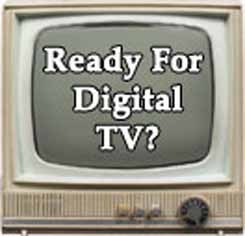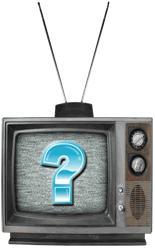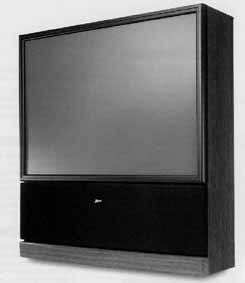
Digital Television (DTV) is an advanced broadcasting technology that will transform your television viewing experience. DTV enables broadcasters to offer television with better picture and sound quality. It can also offer multiple programming choices, called multicasting, and interactive capabilities.
Will the February 17, 2009 date for the end of full-power analog television broadcasting be pushed back?
It depends the digital transition will happen on February 17th in many markets despite Congress's efforts to delay it. Congress has lifted the Feb. 17 deadline for stations to drop analog broadcasting- postponing it until June. But, many stations don't have the budget to reschedule the switch and to keep broadcasting until June so they are going ahead with the Feb 17th date.
Government agencies, industry, public interest groups, and other interested organizations are working hard to make sure that the deadline is met and that everyone is prepared for the end of full-power analog television broadcasting.
What is the digital TV (DTV) transition?
The switch from analog to digital broadcast television is referred to as the digital TV (DTV) transition. In 1996, the U.S. Congress authorized the distribution of an additional broadcast channel to each broadcast TV station so that they could start a digital broadcast channel while simultaneously continuing their analog broadcast channel. Later, Congress mandated that February 17, 2009 would be the last day for full-power television stations to broadcast in analog. Broadcast stations in all U.S. markets are currently broadcasting in both analog and digital. After February 17, 2009, full-power television stations will broadcast in digital only.
Why are we switching to DTV?
An important benefit of the switch to all-digital broadcasting is that it will free up parts of the valuable broadcast spectrum for public safety communications (such as police, fire departments, and rescue squads). Also, some of the spectrum will be auctioned to companies that will be able to provide consumers with more advanced wireless services (such as wireless broadband).
Consumers also benefit because digital broadcasting allows stations to offer improved picture and sound quality, and digital is much more efficient than analog. For example, rather than being limited to providing one analog program, a broadcaster is able to offer a super sharp "high definition" (HD) digital program or multiple "standard definition" (SD) digital programs simultaneously through a process called "multicasting." Multicasting allows broadcast stations to offer several channels of digital programming at the same time, using the same amount of spectrum required for one analog program. So, for example, while a station broadcasting in analog on channel 7 is only able to offer viewers one program, a station broadcasting in digital on channel 7 can offer viewers one digital program on channel 7-1, a second digital program on channel 7-2, a third digital program on channel 7-3, and so on. This means more programming choices for viewers.
What do I need to do to be ready for the end of analog TV broadcasting?
Because Congress mandated that the last day for full-power television stations to broadcast in analog would be February 17, 2009, over-the-air TV broadcasts will be in digital only after that date. If you have one or more televisions that receive free over-the-air television programming (with a roof-top antenna or "rabbit ears" on the TV), the type of TV you own is very important. A digital television (a TV with an internal digital tuner) will allow you to continue to watch free over-the-air programming after February 17, 2009. However, if you have an analog television, you will need a digital-to-analog converter box to continue to watch broadcast television on that set. This converter box will also enable you to see any additional multicast programming that your local stations are offering.
To help consumers with the DTV transition, the Government established the Digital-to-Analog Converter Box Coupon Program. The National Telecommunications and Information Administration (NTIA), a part of the Department of Commerce, administers this program. Every U.S. household is eligible to receive up to two coupons, worth $40 each, toward the purchase of eligible digital-to-analog converter boxes. Beginning in January of 2008, the NTIA has begun accepting applications for coupons. The coupons may only be used for eligible converter boxes sold at participating consumer electronics retailers, and the coupons must be used at the time of purchase. (Please note that these coupons will expire 90 days after mailing). Manufacturers estimate that digital-to-analog converter boxes will sell from $40 to $70 each. This is a one-time cost. For more information on the Digital-to-Analog Converter Box Coupon Program, visit www.dtv2009.gov, or call 1-888-388-2009 (voice) or 1-877-530-2634 (TTY).
Cable and satellite TV subscribers with analog TVs hooked up to their cable or satellite service should not be affected by the February 17, 2009 cut-off date for full-power analog broadcasting.
Do I have to wait until after February 17, 2009 to watch DTV?
No, digital television is available now. If you watch over-the-air television today, you should be able to receive all or most of your local stations' digital signals if you have a DTV receiver. You may view high definition and multicast programming from your local stations. Check your local program listings or contact your local TV stations to find out more about the digital television available now. The FCC's special website, www.dtv.gov, has more information on digital television, or call 1-888-225-5322 (TTY: 1-888-835-5322).

If I have an older analog television, will I have to throw it away after February 17, 2009?
No. A digital-to-analog converter box will allow you to continue using your existing analog TV to watch over-the-air digital broadcasts. You do not need to get rid of your existing analog TV. In addition, analog sets should continue to work as before if connected to a subscription service such as cable or satellite TV. Also, analog sets should continue to work with gaming consoles, VCRs, DVD players, and similar products that you use now.
If I want a new TV, will I have to buy a High Definition TV (HDTV) to watch digital broadcast television after the transition?
No. It is important to understand that the DTV transition is a transition from analog broadcasting to digital broadcasting. It is not a transition from analog broadcasting to High Definition broadcasting. Digital broadcasting allows for High Definition broadcasts, but High Definition is not required, and you do not need to buy a HDTV to watch digital TV. A Standard Definition DTV (which is simply a TV with an internal digital tuner), or a digital-to-analog converter box hooked to an analog TV, is all that is required to continue watching over-the-air broadcast television. Digital broadcast television includes Standard Definition (SD) and High Definition (HD) formats. You can watch High Definition programming on a Standard Definition DTV (or on an analog TV hooked to a digital-to-analog converter box), but it won't be in full High Definition quality. It is also important to know that Standard Definition DTVs are comparably priced to similar sized analog TVs.
 Print
Print Email
Email








